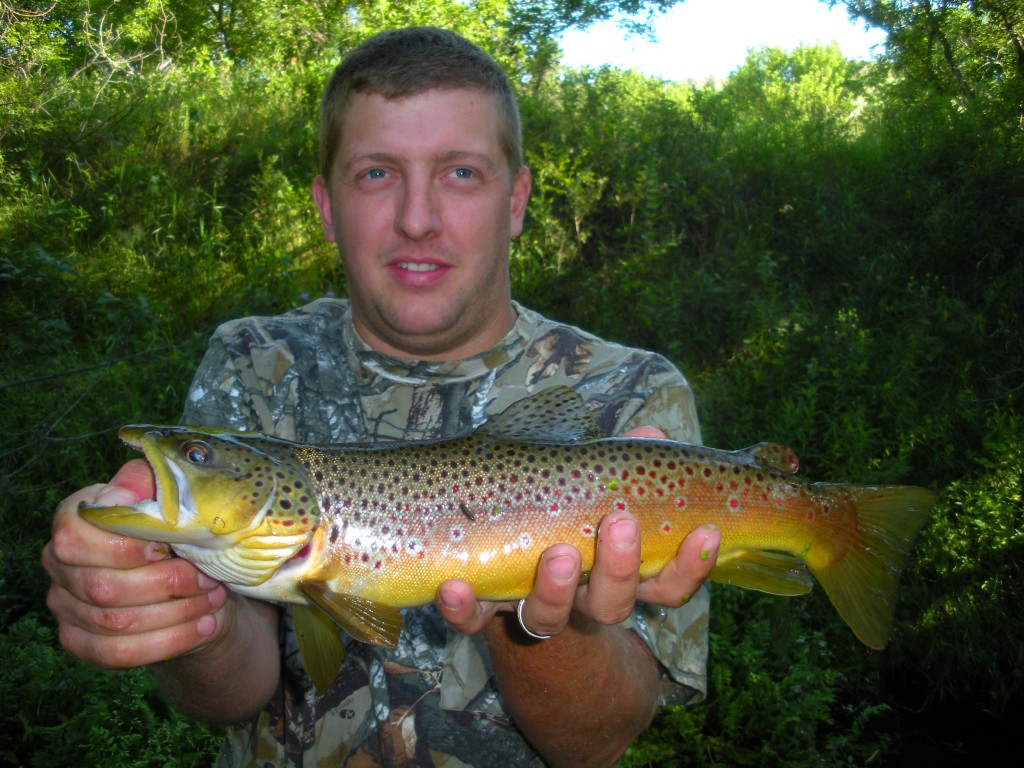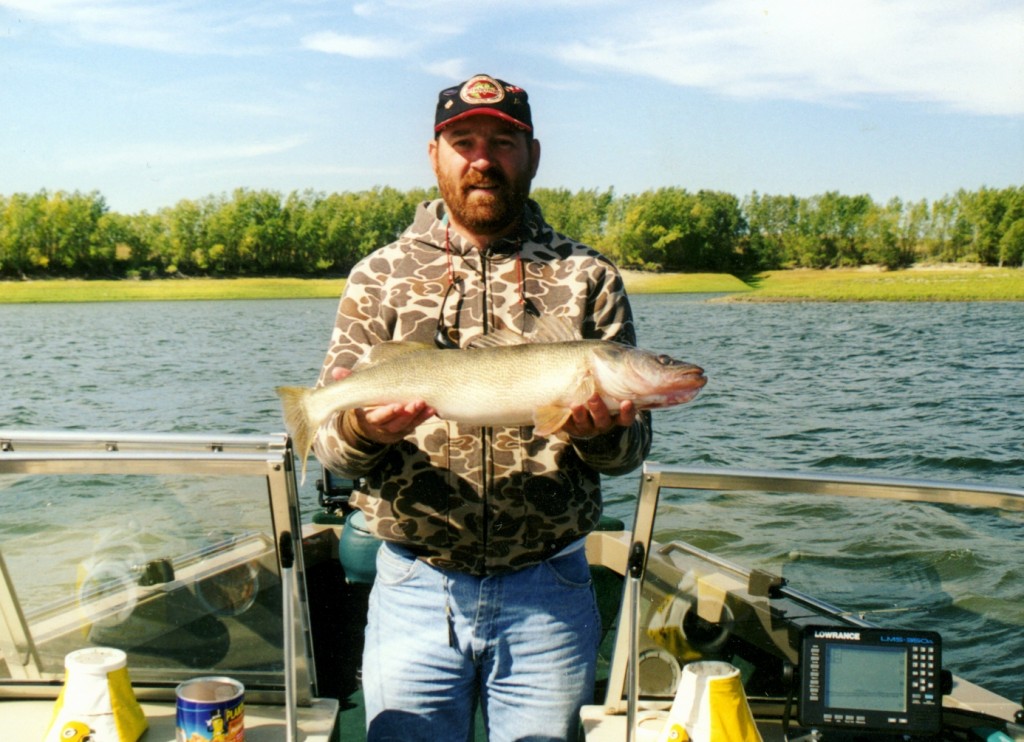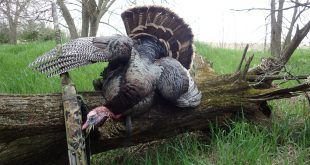I will always tell you that big fish are not hard to catch because they are so smart, but because they are so rare. In almost any population of sport fish, any species, large specimens usually are the least abundant. For that reason, I am a huge proponent of selective harvest. I am not against harvesting some fish for a meal of fresh fish now and then, and I believe we should maintain the tradition of eating some of what we catch. Besides that, fresh fish are darned tasty and good for you too! However, I do believe that the days of filling the freezer with frozen fish fillets should be over, and when I choose to harvest some for a meal of fresh-caught fish, I am going to selectively choose to harvest those species and sizes of fish that are most abundant and can withstand some harvest (within the regulations of course). That means my big fish, big specimens of every species, including panfish, almost always go back in the water as soon as possible.
Catch and release is an established and important part of modern fishing. That is a fact. In some cases that catch & release is mandated by regulations–all length limit regulations are essentially mandatory catch & release regulations. As a pointy-headed fisheries biologist I could recite study after study, report after report, on how the proper application of length limits, mandatory catch & release, works for producing and maintaining quality fishing. Again, that is a fact.
However, I often find that boring, scientific, fisheries management, population dynamics points can be made more effectively by sharing some anecdotes–telling some stories. On the “eve” of spring, on the “eve” of the bulk of our 2013 open-water fishing, let me tell some stories about releasing fish, big fish, and how that can make your fishing better and keep it that way. . . .
I got to thinking about writing this blog post while reading some stories in my Muskie magazine ( http://www.muskiesinc.org/ ). There have been stories there about tagged muskies being caught multiple times by the same angler over a period of years. There was another story of an unusually-marked muskie that was caught & released by one angler only to be caught again, and released again, by another angler within an hour! Muskies are toothy, big and bad predators; they are not easy to handle, but muskie anglers successfully catch & release some really, really big fish and muskie fishing around North America has never been better.
Many of you have probably fished on heavily-fished waters where it seems that every largemouth bass you catch has evidence of being previously hooked, being caught & released. Tagging studies have shown that some largemouth bass in a population may be caught and released multiple times. Apparently, those fish are real “dumb basses” and never do learn to avoid the newest, shiny spinnerbait. (By the way, some of those same tagging studies also have shown that in a population of bass, there are some individual fish that have individual behavior patterns and predation strategies that expose them to far fewer captures by anglers. There can be some big bass even in heavily-fished waters that just never seem to get caught or are rarely caught!)
Let me continue with a couple of more personal stories. The first involves a brown trout caught a few years by one of my nephews. . . .
We have often spent a long summer weekend with my wife’s family at Ft. Robinson in western Nebraska. We do a lot of family activities on those weekends, but then at least some of the boys and myself sneak away to do some fishing when we have a chance (if you want to look through some of my old blog posts, you can find some reports on those fishing trips). On one of those excursions, one of my nephews was fishing with my son and I. We were fishing the middle fork of Soldier’s Creek and had caught several trout that day but, as I recall, my nephew still had not caught a brown trout. I told him I knew where there was a beautiful little pool that always produced a nice brown trout. I showed him where it was and then let him sneak in there and wriggle a bait through the grass and brush and into the creek. BANG. FISH ON! I hurried over with the net and he ended up catching a brown trout a little bit bigger than any I had ever pulled out of that pool. It was a beautiful fish! We snapped a picture or two and then quickly got it back into its home pool.
A couple months later I was catching up on the “chatter” about Nebraska fishing on the internet, and I found a picture of a brown trout someone had caught. I took a look at the picture, got to thinking, and then took a closer look. Yep. It was the same fish my nephew had caught two months earlier.
Look at the spot patterns; obviously the same fish. Fish recycling? You bet. That was a big brown trout for the middle fork of Soldier’s Creek, and that big fish was caught at least twice by at least two different anglers!
Over the years I have caught a number of tagged fish. Have caught tagged rainbow trout in Nebraska and a number of tagged walleyes during my graduate school days in South Dakota. But, I have a story about a tagged walleye I caught in Nebraska that I like to tell, the story of “Ole #3916”. . . .
I worked in our regional office in south-central Nebraska for a couple of years. During that time we were doing some tagging of walleyes in Elwood Reservoir. I will not tell you that I tagged all of those fish, there were several of us that worked on that project, but I did stick the tags in a lot of those Elwood walleyes. A couple years after tagging those fish, a buddy wanted me to jump in his boat and fish Elwood with him. You know he did not have to twist my arm. We made our trip in the fall and vertical-jigging is a very effective fishing technique on many Nebraska reservoirs in the fall. We were vertical-jigging in 51 feet of water when I hooked a nice fish on a Rattle Snakie jigging spoon (http://www.rattlesnakie.com/rattle_snakie.html).
I got the fish to the boat, it was a nice walleye. My partner netted it and it measured at 28 inches–big enough for a catch & release Master Angler Award! We noticed the fish was tagged, so we scribbled down the number on the tag, #3916, left the tag in the fish, snapped a couple of photos, and got her back in the water. I was a little concerned about releasing that fish after catching it from 51 feet of water, but when that walleye got back in the water she shot straight down towards the bottom (the topic of barotrauma in fish caught from deep water is a whole ‘nother topic for another blog post, another time). We stayed in the area and fished for another half-hour or more after catching that fish and after she was released we never saw her again.
A couple of years later I was sitting in the office (no, I am not always out fishing), when the secretary, correction, administrative assistant, brought in the mail for the day. In that day’s mail there was an envelope with a fish tag inside. That was it, just the tag, no return address, no information on the fish or where it was caught, no name, no nothing. Someone had simply clipped off the tag and mailed it to the address that was printed on the tag.
It was a yellow tag, and I knew we had used yellow tags on Elwood walleyes. So, I got out the files I still had on the Elwood walleye tagging, started looking up tag numbers, and about fell out of my chair. It was the same tag number, same fish, that I had caught two years earlier, #3916. It had been really cool to catch a tagged, Master Angler walleye that I likely tagged myself; it was absolutely amazing to have someone else catch that same fish and send in the tag!
Fish recycling? You bet! I know it works.
Now I know some of you are rolling your eyes because I am up on my catch & release soap-box, again. I have been called a catch & release “fascist” for my “extreme” view. You know what? Label me a catch & release fascist if you want; I kind of like the label. Maybe my extremism will counter some of the “catch-all-you-can-and-can-all-you-catch” extremists that I hear from all the time. Usually, that extremism comes from folks complaining to me about the fishing not being as good anymore (wonder why?).
The attitudes of freshwater sport anglers have changed a lot in the past 20-30 years. Attitudes are going to continue to change. Many of those attitudes have already resulted in better fishing, more quality-size fish available for all anglers to catch. If you have not tried it yet, this is the year–catch a big fish, snap some photos, get it back in the water and watch it swim away. A quote I saved from Musky Hunter magazine puts it this way, “There is no better feeling than watching your trophy swim away.” (http://www.muskyhunter.com/) . If you want something more than a photo to remember the catch, you can get a graphite mount (http://magazine.outdoornebraska.gov/2012/12/reproduction-mounts/), and you can immediately release a big fish and still qualify for a Master Angler Award AND catch & release hat pin.
I know this much, when I release a big fish I am making the fishing better for myself and my fishing partners. I am recycling big fish. You might benefit from that too, and I hope you return the favor!
“Game fish are too valuable to be caught only once”–Lee Wulff
P.S. I realize the title and topic of this blog post has been really close to that of an organization founded and directed by one of my friends, Teeg Stouffer. Take a look at the “Recycled Fish” website, and while you are there, join up and take their stewardship pledge, http://www.recycledfish.org/index.htm !
 Nebraskaland Magazine
Nebraskaland Magazine






